SWS 1 (Suttan White Seeded)
BR 1 (Bihar Black Seeded)
BR 2 (Bihar Yellow Seeded)
Soil –
Thrives in almost all soils with a pH range of 6.5-7.5 in hills only. It is a winter
Climate –
vegetable and can withstand temperature as low as 4°C.
Plough the land to a fine tilth, level and form beds.
Once in 5 days.
Hills: 80 kg/ha (2 seeds/hill) and 30 x 15 cm.
Plains: 50 kg/ha (2 seeds/hill) and 45 x 30 cm.
1.Bihar hairy caterpillar: Spilosoma obliqua
| |
Management
| |
2.Gram pod borer: Helicoverpa armigera
| |
Management
|
3.Tobacco caterpillar: Spodoptera litura
| |
Management
|
4.Thrips: Thrips tabaci | |
| |
5.White fly: Bemisia tabaci
| |
Management
| |
6.Bean Aphid:Aphis spp.
| |
Symptoms of damage
Management
| |
7.Jassids: Apheliona maculosa
| |
Management
| |
8.Girdle beetle: Oberea (Obereopsis) brevis
| |||
Symptoms of damage
Management
| |||
1.Alternaria leaf spot: Alternaria tenuissima

| Symptom | |
Management
| |
2.Anthracnose/pod blight: Colletotrichum truncatum

| Symptom | |
Management
| |
3.Bacterial blight: Pseudomonas syringae pv. glycinea

| Symptom | |
Management
| |
4.Cercospora leaf blight, leaf spot and Purple seed stain: Cercospora kikuchii
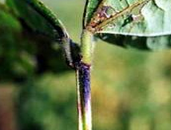
| Symptom | |
Management
| |
5.Charcoal rot, ashy or stem blight or dry root rot: Macrophomina phaseolina
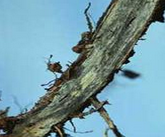
| Symptom | |
Management.
| |
6.Collar rot / Sclerotial blight: Sclerotium rolfsii.
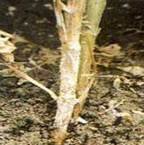
| Symptom | |
Management
| |
7.Frog eye leaf spot: Cercospora sojina
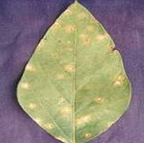
| Symptom | |
Management
| |
8.Rhizoctonia aerial blight / Web blight: Rhizoctonia solani
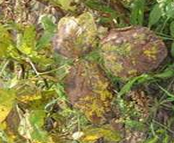
| Symptom | |
Management
| |
9 Bean mosaic virus (SMV) belongs to Poty virus

| Symptom | |
Management
| |
10.Yellow mosaic: Mung bean yellow mosaic virus (MYMV)
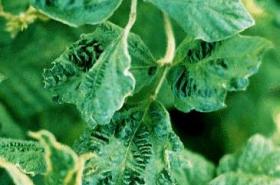
| Symptom | |
Management
| |
1.Nitrogen
Deficiency Symptoms :
Correction Measure :
2.Potassium
Deficiency Symptoms
Correction Measure
Foliar spray of KCl 1% at fortnightly interval
3.Magnesium
Deficiency Symptoms
Correction Measure
Foliar spray of MgSO4 @ 2% at fortnightly interval
4.Sulphur
Deficiency Symptoms
Correction Measure
Foliar spraying of Calcium Sulphate 0.5-1.0 % can control the deficiency.
5.Boron
Deficiency Symptoms
Correction Measure
6.Iron
Deficiency Symptoms
Correction Measure
Foliar spray of FeSO4 1% at fortnightly intervals or soil application of FeSO4 5 to 10 kg/ha
7.Manganese
Deficiency Symptoms
Correction Measure
Foliar spray of MnSO4 @ 0.5% at fortnightly intervals or soil application of MnSO4 @ 20 to 25 kg/ha
8.Zinc
Deficiency Symptoms
Correction Measure
Foliar spray of ZnSO4 1% at fortnightly intervals or soil application of ZnSO4 20 to 25 kg/ha
